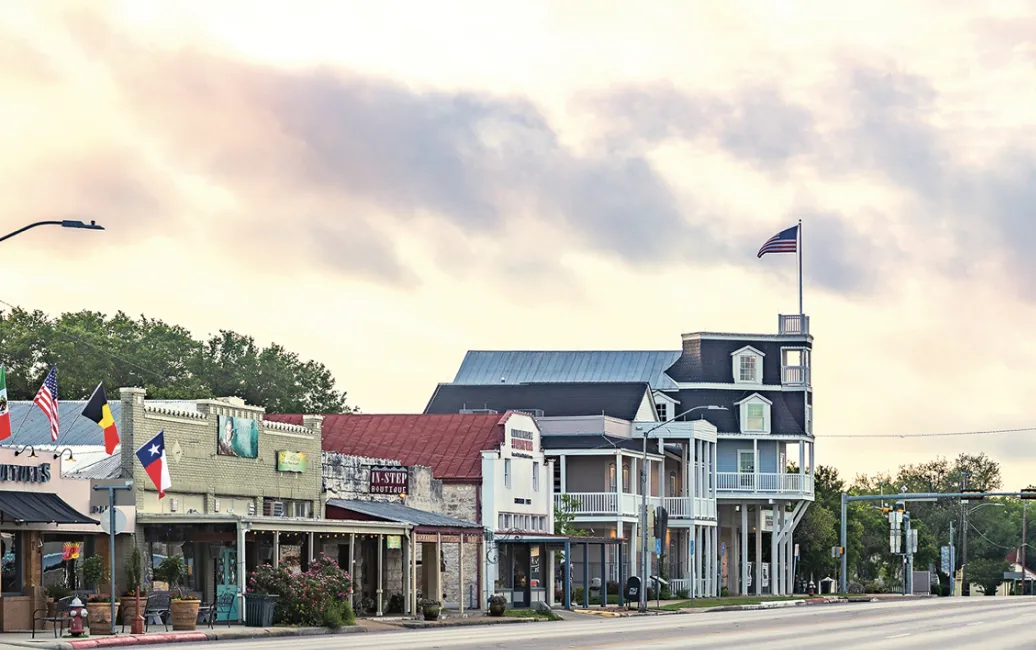Texas, the Lone Star State, is a land of immense size and even greater diversity, and nowhere is this more evident than in its climate. When travelers ponder the “best weather in texas,” they quickly realize there’s no single answer. Spanning multiple geographical zones – from the humid subtropics of the Gulf Coast to the arid plains of the west and the temperate central regions – Texas offers a kaleidoscope of weather patterns throughout the year. As a seasoned explorer of its landscapes, cultures, and flavors, I can tell you that finding your personal best weather here depends entirely on what you want to see, do, and experience.
Understanding Texas’s Diverse Climate Tapestry
Texas isn’t just “hot.” While summer heat is certainly a hallmark in many areas, the state’s sheer size ensures a wide spectrum of climatic experiences.
- North vs. South: The Panhandle in the north can experience significantly colder temperatures than the southern tip near the border.
- East vs. West: Eastern Texas is part of the humid subtropical zone, lush and green with ample rainfall. Western Texas, particularly the Trans-Pecos region, is arid to semi-arid, characterized by dry heat and sparse vegetation.
- Coastal vs. Inland: Proximity to the Gulf of Mexico dramatically influences weather, bringing higher humidity, warmer winters, and the potential for tropical storms and hurricanes. Inland areas experience greater temperature extremes between seasons.

While Texas offers beautiful sunny days throughout the year, it’s also prone to dramatic weather events, including thunderstorms, tornadoes (especially in North Texas), and occasional winter ice storms or even snowfall in some regions. Understanding this inherent diversity is the first step to finding your [best weather to travel] within the state.
Key Factors Shaping Texas Weather
The distinct climates across Texas aren’t random; they are shaped by significant geographical and atmospheric factors.
Altitude and Elevation
One of the most impactful factors is elevation. As you gain altitude, temperatures generally drop, and air becomes drier.
- West Texas Highlands: Regions like the Guadalupe Mountains and Davis Mountains boast elevations over 8,000 feet, leading to notably cooler temperatures, especially at night, compared to lower elevations in the state. This also influences rainfall patterns and allows for more frequent snowfall in winter.
- Central Plains & Panhandle: These areas are higher than the coastal plains, contributing to cooler overall temperatures than the Gulf Coast, though still experiencing significant seasonal swings.
Coastal Proximity and Ocean Currents
The Gulf of Mexico is a major climate driver for the eastern and southern parts of the state.
- Humidity: Cities near the coast, like Houston, Galveston, and Corpus Christi, experience high humidity year-round due to evaporation from the warm Gulf waters.
- Temperature Moderation: The large body of water helps moderate temperatures, leading to milder winters and slightly less extreme summer highs right on the coast compared to further inland, although the humidity makes the heat feel more intense.
- Tropical Systems: The coast is susceptible to tropical storms and hurricanes, primarily from June through November.
Terrain and Wind Patterns
Texas’s varied landscapes, from flat plains to rolling hills and mountains, interact with prevailing wind patterns to create localized weather phenomena. The open, flat terrain of the Panhandle, for instance, is known for its strong winds and rapid temperature changes.
Land Cover Variations
The environment immediately surrounding a city or region – whether it’s dense forest (East Texas), vast plains, desert, or urban sprawl – can create microclimates affecting local humidity, temperature, and wind flow.
Which Cities Offer the Best Weather in Texas?
Defining the “best weather” is subjective – are you seeking mild winters, dry heat, ample sunshine, or distinct seasons? Here’s a look at the climate profiles of some key Texas cities and regions to help you decide where you might find your ideal Texas weather.
Austin: The Live Music City’s Climate
Nestled in Central Texas, the state capital of Austin often enjoys a reputation for relatively pleasant weather, balancing seasons without the extreme humidity of the coast or the aridity of the west.
- Average Temps: Highs around 79°F (26°C), Lows around 59°F (15°C) annually.
- Seasons: Experiences distinct seasons, with hot summers, mild-to-cool winters, and beautiful, temperate springs and falls.
- Why it might be “Best”: Offers a good mix for those who enjoy seasonal changes without extreme cold. Spring and fall are particularly lovely, perfect for outdoor activities like exploring the city’s many parks or catching outdoor music. [Things to do alone in Austin] often involve enjoying the city’s outdoor spaces, best done in milder weather. You can find guidance on the [best time to visit Austin] based on these weather patterns.
Houston: Gulf Coast Vibrancy and Climate
Houston, a sprawling metropolis near the Gulf, is defined by its humid subtropical climate.
- Average Temps: Highs around 78°F (26°C), Lows around 60°F (16°C) annually.
- Seasons: Known for long, hot, and very humid summers, mild and relatively short winters, and warm springs and falls.
- Why it might be “Best”: Ideal for those who prefer warmer temperatures and don’t mind high humidity. Winters are very mild, rarely seeing freezing temperatures for extended periods. This climate supports lush greenery and year-round outdoor activities suitable for warmer weather.

Downtown Houston, Texas skyline reflecting the city’s humid subtropical climate and bayou system.
Dallas/Fort Worth: North Texas Balance (and extremes)
The Dallas-Fort Worth metroplex sits in North Texas, experiencing a climate that blends elements of the state’s diverse regions.
- Average Temps: Highs around 77°F (25°C), Lows around 57°F (14°C) annually.
- Seasons: Gets more pronounced seasons than Southern or Coastal Texas, including hotter summers and cooler winters, sometimes with freezing temperatures and even ice/snow. Spring and fall are pleasant but can be prone to severe thunderstorms and tornado activity.
- Why it might be “Best”: Offers a classic four-season experience within Texas. If you enjoy distinct changes from hot summers to crisp falls and cool winters, this region provides it.
San Antonio: Historic Charm, Southern Heat
South of Austin, San Antonio shares a similar climate profile but leans slightly warmer, especially in winter.
- Average Temps: Highs around 80°F (27°C), Lows around 60°F (16°C) annually.
- Seasons: Long, hot summers; mild, short winters; pleasant spring and fall. Humidity is present but often less intense than right on the coast.
- Why it might be “Best”: Great for those seeking consistently warm weather throughout much of the year and very mild winters. The climate is conducive to enjoying the city’s outdoor Riverwalk and historic sites for many months.
El Paso: West Texas Desert Contrast
Located at the western tip, El Paso has a classic arid desert climate.
- Average Temps: Highs around 78°F (26°C), Lows around 54°F (12°C) annually.
- Seasons: Hot, dry summers; cool to cold winters; pleasant, dry spring and fall. Significant diurnal temperature variation (big drop from day to night).
- Why it might be “Best”: If you dislike humidity, El Paso is your spot. The dry heat, even when intense, feels different from humid heat. Nights are often cool and comfortable, a welcome respite from the sun. It also boasts the most sunny days in the state.
Other Notable Climates: Finding Your Niche
Beyond the major cities, other Texas regions offer unique weather profiles:
- The Hill Country (Fredericksburg, Kerrville): Slightly cooler than surrounding lowlands due to elevation, offering beautiful spring and fall weather perfect for scenic drives and exploring vineyards. Prone to flash floods in rainy seasons.
 Charming street scene in Fredericksburg, Texas Hill Country, known for its mild spring and fall weather.
Charming street scene in Fredericksburg, Texas Hill Country, known for its mild spring and fall weather. - The Panhandle (Amarillo, Lubbock): Colder winters with more frequent snowfall, hot summers, often windy. Lubbock’s semi-arid climate is great for drought-tolerant plants.
- East Texas (Tyler, Longview): Humid subtropical, very green, mild winters, hot and sticky summers.
- South Texas (Laredo, McAllen): Warmest winters in the state, intensely hot summers. Arid to semi-arid away from the coast.
- The Coast (Corpus Christi, Galveston): Heavily influenced by the Gulf, mild winters, very hot and humid summers, hurricane risk. Offers a prolonged growing season for tropical plants.
Sunshine, Seasons, and Finding Your “Best Weather in Texas”
Sunshine is a major factor in what many consider “best weather.” Texas is generally a sunny state, though totals vary:
Annual Sunshine Averages (Estimated Sunny Days)
- El Paso: 300-320
- Lubbock: 260-280
- Austin: 230-250
- San Antonio: 220-240
- Dallas/Fort Worth: 230-250
- Corpus Christi: 220-235
- Amarillo: 260-275
- Houston: 204-225
- Brownsville: 230-245
Note: “Sunny day” definitions can vary by source.
Discover the Must-See Things to See in Orlando Florida
Unforgettable Winter Activities in Michigan
Discover the Top Restaurants in Denver – A Culinary Journey
Navigating Texas Seasons
- Spring (March-May): Often considered peak “best weather” across much of the state. Mild temperatures, blooming wildflowers (especially in the Hill Country), perfect for outdoor activities. However, also peak season for severe thunderstorms and tornadoes in many areas.
- Summer (June-August): Universally hot across the state. Humid near the coast and in the east, dry in the west. Best for water activities (lakes, rivers, coast) or indoor attractions. Requires planning to avoid peak heat.
- Fall (September-November): Another strong contender for [best weather to travel], particularly late September through November. Temperatures cool down significantly, humidity drops (especially inland), and skies are often clear and pleasant. Ideal for hiking, festivals, and exploring cities.
- Winter (December-February): Varies greatly. Mild-to-cool in the south and along the coast, cold with potential for freezing temps, ice, or snow in the north and west. Often sunny days even when cool. Ideal for avoiding crowds and enjoying cooler-weather activities.
Defining “Best”: It Depends on Your Travel Goals
Your definition of the “best weather in texas” should align with your travel plans:
- Hiking/Outdoor Adventures: Spring and Fall offer the most comfortable temperatures statewide. West Texas in Fall has stunning clear skies and cool air.
- Beach/Water Activities: Summer is the obvious choice, despite the heat and humidity.
- Exploring Cities/Historical Sites: Spring and Fall are ideal. Winters in South/Central Texas can also be very pleasant for sightseeing without the crowds.
- Experiencing Festivals: Many major festivals (like SXSW in Austin, Oktoberfest in Fredericksburg) happen in Spring and Fall, aligning with pleasant weather.
To fully immerse yourself in the Texas experience, exploring its numerous [texas tourist attractions] is key, and planning around the weather enhances the enjoyment. Ready to explore? Let’s [go texas]!
Planning Your Trip for the Best Weather in Texas
Deciding on the ideal time and place to visit Texas requires a bit of self-reflection: What weather makes you happiest? What activities are central to your trip?
If mild temperatures and beautiful scenery are priorities, target Central Texas or the Hill Country in Spring (March-April) or Fall (October-November). For dry heat and abundant sunshine, West Texas in Spring or Fall is superb. If you’re a fan of warm, humid climates and want to experience the Gulf, the coast is inviting for much of the year, though you must be mindful of hurricane season during summer and fall.
Always check the specific forecast closer to your travel dates, as Texas weather can be famously unpredictable, shifting rapidly due to its vast, open terrain.
FAQ: Finding the Best Weather in Texas
- What month has the best weather in Texas?
Generally, October and April are often cited as having the most pleasant weather across a large portion of the state, offering mild temperatures and lower humidity before the summer heat or winter chill sets in. - Which part of Texas has the mildest weather year-round?
The Lower Rio Grande Valley in South Texas tends to have the mildest winters. For a balance of less extreme temperatures and decent seasonality without coastal humidity, parts of the Hill Country or Central Texas (like Austin or San Antonio) are often preferred. - Which city in Texas has the least humidity?
El Paso, located in the arid western part of the state, is consistently the least humid major city in Texas. - Is Texas weather unpredictable?
Yes, due to its size and diverse climate zones, Texas weather can change rapidly, especially during transitional seasons like spring and fall, which are prone to severe storms.
Conclusion
The quest for the “best weather in texas” isn’t about finding one perfect spot, but rather discovering which corner of this magnificent state aligns with your personal climate preferences and desired experiences. From the crisp, dry air of the western mountains to the warm, humid embrace of the Gulf Coast, and the balanced seasonality of the central plains, Texas offers a climate for every traveler. Consider what kind of weather empowers your adventure, and you’ll find your own piece of meteorological heaven in the Lone Star State. So pack your bags, check the forecast, and get ready to explore!
